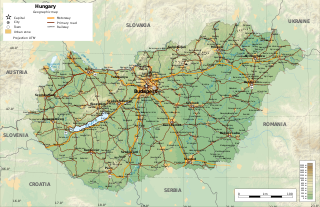
Hungary is a landlocked country in southeastern Central Europe, bordering the Balkans. Situated in the Pannonian Basin, it has a land area of 93,030 square km, measuring about 250 km from north to south and 524 km from east to west. It has 2,106 km of boundaries, shared with Slovakia to the north, Ukraine to the northeast, Romania to the east and southeast, Serbia to the south, Croatia to the south and southwest, Slovenia to the west and southwest, and Austria to the west.

Debrecen is Hungary's second-largest city, after Budapest, the regional centre of the Northern Great Plain region and the seat of Hajdú-Bihar County. A city with county rights, it was the largest Hungarian city in the 18th century and it is one of the Hungarian people's most important cultural centres. Debrecen was also the capital city of Hungary during the revolution in 1848–1849. During the revolution, the dethronement of the Habsburg dynasty was declared in the Reformed Great Church. The city also served as the capital of Hungary by the end of World War II in 1944–1945. It is home to the University of Debrecen.

Berettyóújfalu is a town in Hajdú-Bihar county, in center of the Northern Great Plain region of eastern Hungary, near the border with Romania. It is strategically located, being 35 km south of Debrecen, the second largest city in Hungary, and 40 km west of Oradea, the tenth largest city in Romania. Berettyóújfalu is named after the river Berettyó.

Hajdú–Bihar is an administrative county in eastern Hungary, on the border with Romania. It shares borders with the Hungarian counties Szabolcs-Szatmár-Bereg, Borsod–Abaúj–Zemplén, Jász–Nagykun–Szolnok and Békés. The capital of Hajdú-Bihar county is Debrecen. Together with Bihor County in Romania it constitutes the Biharia Euroregion.
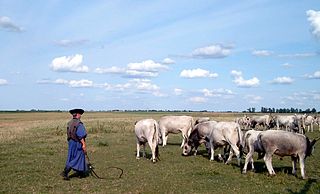
The Hungarian puszta is a temperate grassland biome of the Great Hungarian Plain. It is an exclave of the Pannonian Steppe, and lies mainly around the River Tisza in the eastern part of Hungary, as well as in the western part of the country and in the Burgenland of Austria.

Békés is an administrative division in south-eastern Hungary, on the border with Romania. It shares borders with the Hungarian counties Csongrád, Jász-Nagykun-Szolnok, and Hajdú-Bihar. The capital of Békés county is Békéscsaba. The county is also part of the Danube-Kris-Mures-Tisa euroregion.

Hajdúság is a historical and geographical region in Hungary, located in the Great Hungarian Plain around Debrecen. It consists of six hajdú towns, named Hajdúböszörmény, Hajdúdorog, Hajdúnánás, Hajdúhadház, Hajdúszoboszló and Vámospércs.

Great Plain and North is a statistical region of Hungary. It comprises the NUTS 2 regions of Northern Hungary, Northern Great Plain, and Southern Great Plain.
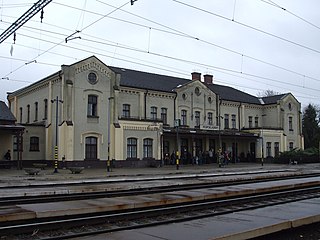
Püspökladány is the sixth largest town of Hajdú-Bihar county in North Eastern Hungary with a population of approximately 16,000 people. It is located southwest of Debrecen at the juncture of three regions: Sárrét, Hortobágy and Nagykunság. It is an important transportation hub at the junction of national highway 4 from Budapest to Záhony, and national highway No. 42 from Romania to Biharkeresztes. The town is served by four different rail lines.

Hajdúdorog is a town in Hajdú-Bihar county, in the Northern Great Plain region of eastern Hungary. Hajdúdorog had a population of 8,797 in 2014, with a population density of 8,997 people per km2. The city is 130 m above sea level and the district area is 100.65 km2.
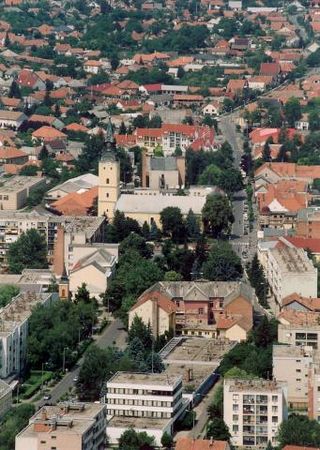
Hajdúnánás is a town in Hajdú-Bihar County, in the Northern Great Plain region of eastern Hungary.
Zsáka is a large village in Hajdú-Bihar county, in the Northern Great Plain region of eastern Hungary.

Létavértes is a town in Hajdú-Bihar county, in the Northern Great Plain region of eastern Hungary.
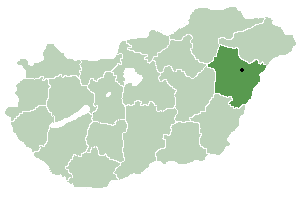
Görbeháza is a village in Hajdú-Bihar county, in the Northern Great Plain region of eastern Hungary.

Hortobágy is a village in Hajdú-Bihar County in eastern Hungary. It lies on the banks of the Hortobágy river, which is crossed at Hortobágy by the Nine-arched Bridge, one of the principal man-made monuments of the Hortobágy National Park. The park consists mainly of the remaining areas of Hungarian puszta.

Debrecen is a district in central part of Hajdú-Bihar County. Debrecen is also the name of the town where the district seat is found. The district is located in the Northern Great Plain Statistical Region.

Balmazújváros is a district in north-western part of Hajdú-Bihar County. Balmazújváros is also the name of the town where the district seat is found. The district is located in the Northern Great Plain Statistical Region. This district is a part of Hajdúság historical and geographical region.

Hajdúszoboszló is a district in western part of Hajdú-Bihar County. Hajdúszoboszló is also the name of the town where the district seat is found. The district is located in the Northern Great Plain Statistical Region. This district is a part of Hajdúság historical and geographical region.
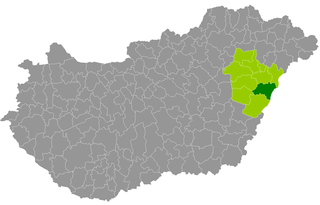
Derecske is a district in central-eastern part of Hajdú-Bihar County. Derecske is also the name of the town where the district seat is found. The district is located in the Northern Great Plain Statistical Region.























